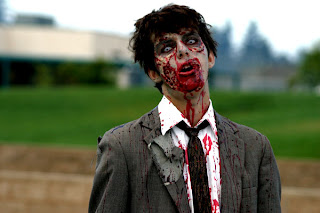
Creatures called “souls” have infiltrated and taken over the Earth. People go through their daily routines as normal, but they are completely different from who they were before the invasion. The world is now a utopia. No one is hungry or sick. People only die of old age and war has been eliminated. This new world isn’t all sunshine and rainbows. Souls are very small silver beings that attach to a host’s brain and take over the body, leaving the human imprisoned in his or her own mind. Wanderer is a special “soul.” She’s been on almost every planet her people have colonized and hasn’t found a world she really cares about. She’s implanted into Melanie, a girl who tried to kill herself to escape. Melanie isn’t silent like she’s supposed to be and fights with Wanderer, who still has control over her body. After a few months of an unsatisfying life, Wanderer decides to go to a Healer to fix her problem with Melanie. She ends up following directions to find Melanie’s boyfriend and brother because she has developed a love for them through Melanie’s memories. Will she find them or will she just die in the wilderness? Will she lead other “souls” right to them and end up ruining their lives?
This is Stephenie Meyer’s first foray into the science fiction and adult fiction genres, published in between the third and fourth books in the Twilight series. I am really impressed and I really enjoyed the novel. I like Twilight, but I look back on it and see that it needs editing to make the plot seem more integrated as opposed to an afterthought. The writing in The Host is much better and shows that Meyer has grown and evolved as a writer. The narrative is very character driven and the writing really sucks the reader in. I was completely into the story on page one. It starts from the point of view of the souls. Through their eyes, humans seem incredibly destructive and violent, making their reasoning for taking us over seem logical. This aspect of the novel was one of the most chilling. The whole idea of being inside of your body and seeing someone else walk around and communicate through it is also disturbing. It’s a cruel form of torture. Another thing that was disturbing was the amount of violence. I am not squeamish at all, but the violence inflicted upon Wanderer by humans really bothered. It was very close to domestic violence and made me cringe to read it.
I like the romantic story that occurs in this dystopic world. It involves four people in only three bodies. One person loves Wanderer and the other loves Melanie. The confusing feelings and the growing and evolving relationship between Wanderer and Melanie is compelling and interesting to read. They start out completely hating each other, but evolve into close friends. The characters are flawed, but detailed and realistic. They are what really make the story interesting and engaging. The plot doesn’t move very quickly, but I’m so taken with the characters that it doesn’t faze me at all.
Meyer describes her novel as for people who don’t like science fiction, but I completely disagree. I also feel it is disingenuous to the science fiction community. I think fans of science fiction would enjoy The Host too. I think everyone could find something they like in the novel, whether it’s action, adventure, romance, or science fiction.
My rating: 5/5 fishmuffins





